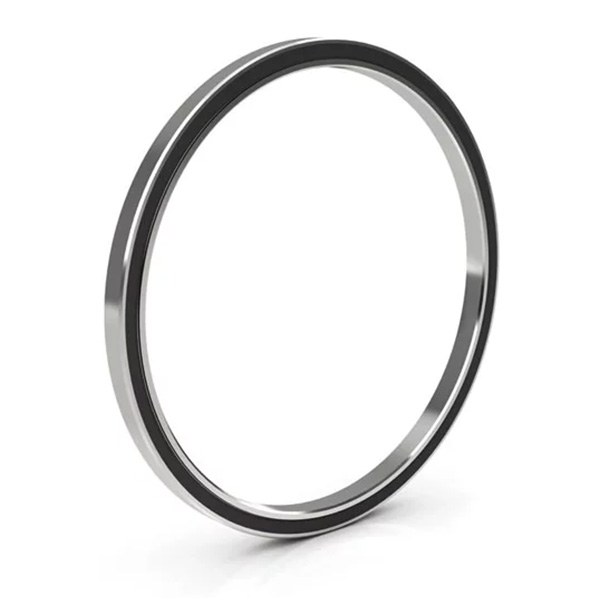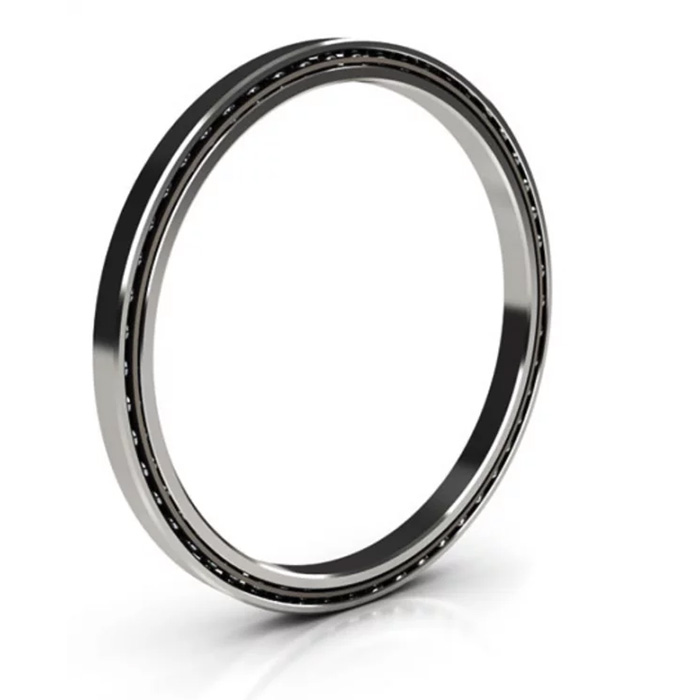Thin Section Bearings
Thin section bearings are engineered for space-saving, lightweight, and low-friction performance while maintaining high precision. Available in inch and metric sizes, they’re ideal for aerospace, robotics, medical devices, and more—offering compatibility with Kaydon models and supported by easy-to-use cross-reference charts.
Overview of Thin Section Bearings
Thin section bearings feature a uniquely slender cross-section designed to reduce weight, conserve space, and minimize friction—without compromising strength or accuracy. These compact bearings are widely used in advanced applications such as instrumentation, robotics, aerospace systems, medical equipment, cameras, and optical instruments.
We offer a wide selection of thin section bearings in both inch and metric dimensions, with multiple configurations available. Many of our models are interchangeable with Kaydon bearings, and we provide a concise cross-reference chart to simplify selection.
Main Features
- Compact size for tight-space applications
- Lightweight construction
- Precision engineering with tight tolerances
- Low friction for energy-efficient motion
- Reliable performance under demanding load conditions
Types of Thin Section Bearings
Kaydon-Style Constant Section Bearings
- Angular Contact (Type A): Optimized for high axial loads; suitable for combined loads but not ideal for moment or reversing axial loads alone. Commonly used in duplex pairs.
- Four Point Contact (Type X): Ideal for moment and reversing axial loads; features gothic arch raceways for four-point contact. Best suited for light loading, not pure radial loads.
- Radial Contact (Type C): Designed for heavy radial loads; also handles moderate axial and moment loads effectively due to deep ball grooves.
Deep Groove Thin Section Ball Bearings
These resemble standard ball bearings but with thinner cross-sections. They handle both axial and radial loads in space-constrained environments.
Flanged Thin Section Bearings
Flanged designs incorporate a flange on the outer ring, which aids in axial positioning and simplifies mounting. Ideal for installations with axial space limitations.
Materials Used in Thin Section Bearings
Rings
Most bearing rings are made from SAE 440C stainless steel for corrosion resistance. Optional coatings include nodular thin dense chrome (TDC) for high-temperature and high-adhesion applications. Other materials include aluminum, 300 Series stainless steel, and 17-4 stainless steel for specialized use cases.
Balls
- 440C stainless steel
- 300 Series stainless steel
- Silicon nitride
- M-50 tool steel
Cages
Cage materials vary by application and include brass, nylon, phenolic, and stainless steel—each offering specific performance advantages.
Variants: Open, Sealed, and Shielded
- Open: Oil-lubricated with low starting torque; suitable for low-contamination environments.
- Sealed: Uses nitrile/BUNA-N rubber, Viton (up to 230°C), or PTFE seals (up to 250°C) to protect against dust, moisture, and lubricant leakage. Note: Seals may increase friction and reduce top speed.
- Shielded: Features metal shields to guard against contamination while maintaining moderate lubrication flow. A good balance for many applications.
Types of Bearing Cages
- Riveted Cages: Secured with rivets, ideal for heavy-load and high-strength applications.
- Crown Cages: Offer low friction and even ball spacing, perfect for high-speed, high-precision use. Standard in all 6700 series bearings, available in some 6800 and 6900 series as TW nylon cages.
- Ribbon Cages: Made from metal strips; commonly used in low-friction applications. Available in many 6800 and 6900 series models.
Find the Right Fit with Our Cross Reference Charts
To simplify your selection process, we offer easy-to-navigate thin section bearing cross reference charts that allow you to find direct matches to popular Kaydon models. Whether you’re replacing a bearing or designing a new system, our charts save time and improve accuracy.
Showing 2251–2253 of 2253 results



